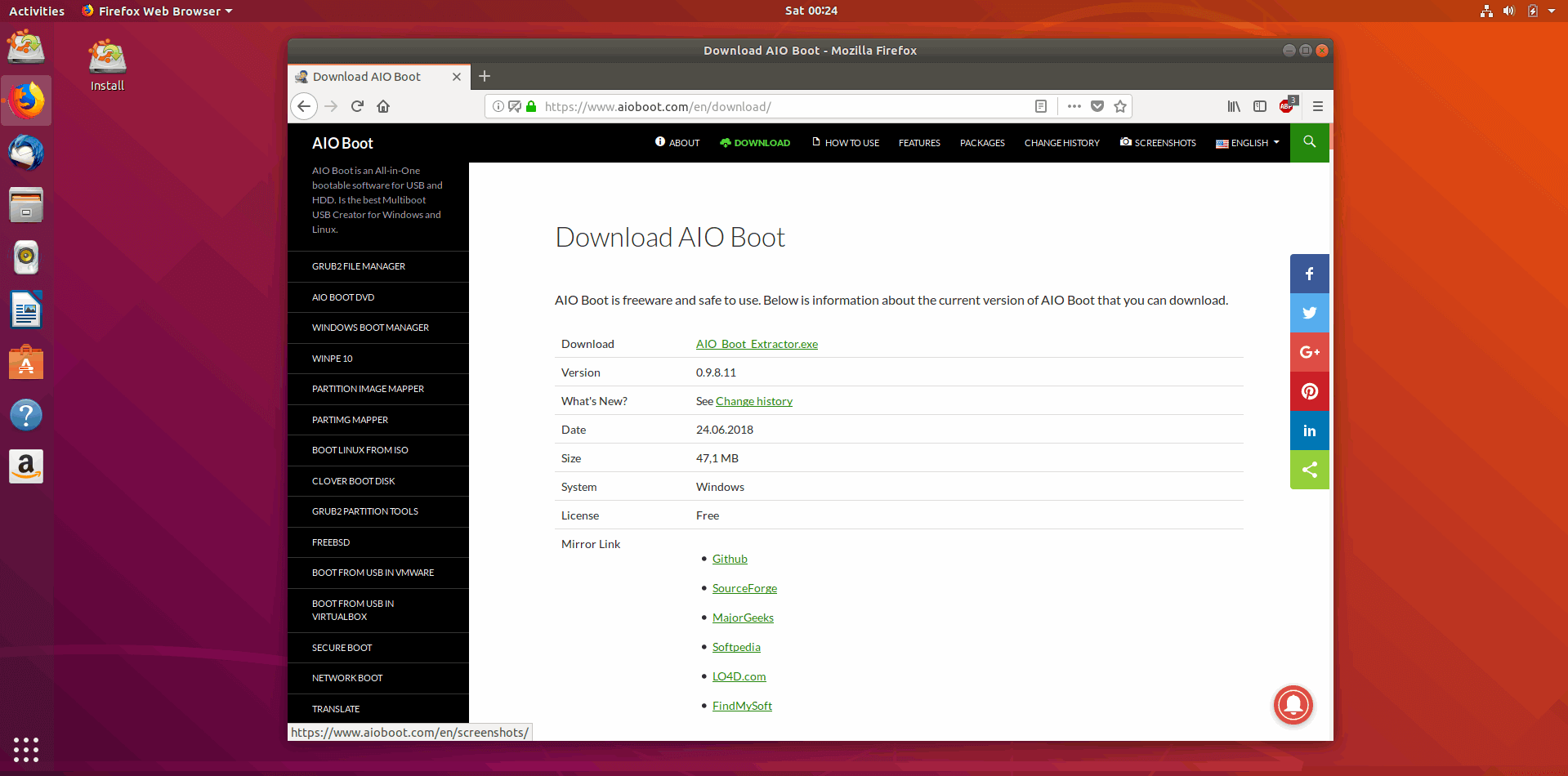

- HOW TO MAKE A UBUNTU BOOTABLE USB ON WINDOWS 10 INSTALL
- HOW TO MAKE A UBUNTU BOOTABLE USB ON WINDOWS 10 UPDATE
- HOW TO MAKE A UBUNTU BOOTABLE USB ON WINDOWS 10 WINDOWS 10
Now the ISO, with ~3.3 GB install.wim, should be put on the USB using Terminal or UNetbootin or other application. This should compress the file to ~3/4 it's original size. win in Terminal: sudo wimlib-imagex optimize install.wim -solid. HOW TO MAKE A UBUNTU BOOTABLE USB ON WINDOWS 10 INSTALL
In Ubuntu, run sudo apt install wimtools in Terminal. Download the latest Windows ISO form Microsoft.wim file can be compressed during installation, and expanded upon installation.
 Because of the 4 GB FAT32 file-size limitation, the.
Because of the 4 GB FAT32 file-size limitation, the. HOW TO MAKE A UBUNTU BOOTABLE USB ON WINDOWS 10 UPDATE
Install the old Windows OS, and then update it - a lengthy process. Run the tool under wine to create the flash boot USB. HOW TO MAKE A UBUNTU BOOTABLE USB ON WINDOWS 10 WINDOWS 10
Download Windows 10 Version 2004 (20H1).
 Download the 2004 version of Windows Media Creation Tool. Apparently, an older version of the Windows Media Creation Tool runs well in wine. The Startup disk creator is Ubuntu’s native tool that comes preinstalled in every modern Ubuntu release. Activate the Create a bootable disk using checkbox, click the button to the right of it, and select your downloaded ISO file. If the Create a bootable disk using option is grayed out, click the File System box and select FAT32. All we need is ISO file of your desired Operating system and one empty USB stick and one software called Universal USB Installer from Pendrive Linux website. Creating Ubuntu USB Startup Disk Using Graphic Tool. Click the Device box in Rufus and ensure your connected drive is selected. Making Bootable USB stick in windows is an easy task. Here are two suggestions for making a Windows installation on a FAT32-formatted USB drive under Linux: Let’s shift gears and see how you can create a startup Ubuntu. Therefore, the flash USB drive should be formatted FAT32. exFAT is a proprietary file system, and even Linux needs fuse to work with it. For example, Windows10.iso or Ubuntu.iso must be in the phone’s internal storage for the. Once the flash process is completed, reboot the PC into your Ubuntu system. Next, launch Rufus and click the Select button to select the Ubuntu ISO. Requirements: 8GB USB drive or at least two times larger than ISO size. Plug your USB drive into your Windows computer. Before you proceed, here’s what is required to use the application to make the USB device bootable from your Android phone. Most PC's BIOS do not recognize exFAT-formatted media. Bootable USB Stick on Android with ISO 2 USB.
Download the 2004 version of Windows Media Creation Tool. Apparently, an older version of the Windows Media Creation Tool runs well in wine. The Startup disk creator is Ubuntu’s native tool that comes preinstalled in every modern Ubuntu release. Activate the Create a bootable disk using checkbox, click the button to the right of it, and select your downloaded ISO file. If the Create a bootable disk using option is grayed out, click the File System box and select FAT32. All we need is ISO file of your desired Operating system and one empty USB stick and one software called Universal USB Installer from Pendrive Linux website. Creating Ubuntu USB Startup Disk Using Graphic Tool. Click the Device box in Rufus and ensure your connected drive is selected. Making Bootable USB stick in windows is an easy task. Here are two suggestions for making a Windows installation on a FAT32-formatted USB drive under Linux: Let’s shift gears and see how you can create a startup Ubuntu. Therefore, the flash USB drive should be formatted FAT32. exFAT is a proprietary file system, and even Linux needs fuse to work with it. For example, Windows10.iso or Ubuntu.iso must be in the phone’s internal storage for the. Once the flash process is completed, reboot the PC into your Ubuntu system. Next, launch Rufus and click the Select button to select the Ubuntu ISO. Requirements: 8GB USB drive or at least two times larger than ISO size. Plug your USB drive into your Windows computer. Before you proceed, here’s what is required to use the application to make the USB device bootable from your Android phone. Most PC's BIOS do not recognize exFAT-formatted media. Bootable USB Stick on Android with ISO 2 USB.







 0 kommentar(er)
0 kommentar(er)
